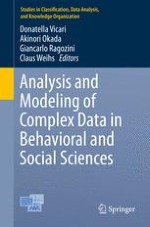2014 | OriginalPaper | Chapter
A Value Added Approach in Upper Secondary Schools of Lombardy by OECD-PISA 2009 Data
Authors : Isabella Romeo, Brunella Fiore
Published in: Analysis and Modeling of Complex Data in Behavioral and Social Sciences
Publisher: Springer International Publishing
Activate our intelligent search to find suitable subject content or patents.
Select sections of text to find matching patents with Artificial Intelligence. powered by
Select sections of text to find additional relevant content using AI-assisted search. powered by
